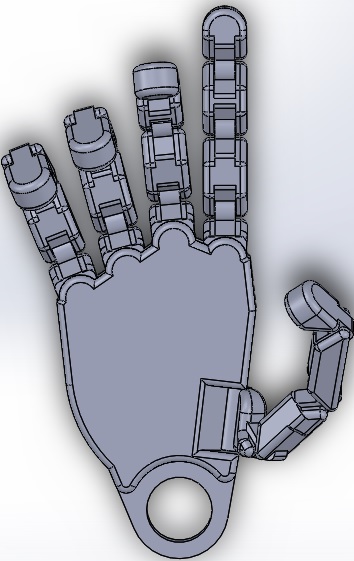The Krobohand Group consists of four students who all share an interest in human assistive robotics.
The team is as follows:
1.) Ethan Kirkley – Team Manager (4th year Mechanical Engineering)
2.) Cameron Hunt – Purchasing Manager (4th year Mechanical Engineering)
3.) Zeppy Khechadoorian – Document Manager (4th year Physics)
4.) Kevin Wong – Team Safety Officer (4th year Mechanical Engineering)
The Krobohand’s Project Faculty Advisor is Dr. Reinkensmeyer. We approached him as a group, as we believed that he is the most suited in giving us guidance concerning our progress when needed. Our group has a Lulzbot Taz 6 3D printer, which we will be using extensively to rapidly prototype our ideas, and ultimately, or final prosthesis.
The idea behind Krobohand came about, as we believed that a gap existed in the upper limb prosthetic industry in the spectrum of functionality and cost. Currently, a simple cosmetic prosthetic with no functionality can cost an amputee upwards of $3,500. This is a staggering amount. Going further into the functionality side of the spectrum, the prices skyrocket even further. To receive basic functionality, a basic hook prosthetic can cost an amputee upwards of $10,000. If we go even further, myoelectric prosthetic hands can cost an amputee upwards of $50,000.
Of course, there do exist other 3D printed, upper limb prosthesis on the market today, from the likes of E-Nable Group, Open Bionics, and Unlimited Tomorrow, and though we admire what they’ve done with their products, we believe that improvements can be made to greatly increase the functionality of the prosthesis, while keeping the cost still much lower than that of an industry cosmetic prosthesis.
Our overall goals of Krobohand are to create a sleek, clean, functional, and recognizable prosthetic hand. We will be utilizing the capabilities of dual material printing to improve on the current functionality of 3D printed prosthesis. Further, we are working on streamlining the process for connection of the prosthesis and amputee using electromyography. On top of this, we are considering if it is possible to create a “hybrid” prosthesis that uses both manual articulation, on top of EMG. As was shown in the recent Paralympic Games in Switzerland, a prosthesis that was articulated manually ended up winning an event for upper limb prosthesis, so this may be something work looking into.
Through the course of the Krobohand Project, we will be working towards specific aims to see whether or not they’re practicality for the prosthesis. Firstly, we will be testing the viability of fully 3D printed joints. That is, during the process of 3D printing the components, the joints of the fingers are constructed, meaning no further assembly is required, which would aid in cost reduction. We have already printed test prototypes of joints, that we’re looking into how to properly test. Secondly, utilizing our printer’s capabilities of dual material printing, by printing within the prosthesis, flexible thermoplastic elastomer tendons, which we believe will serve as a valid stabilizing, and more importantly, restoring force, for the prosthesis. Thirdly, we will be keeping connectivity between the amputee and the prosthesis non-evasive, which leads us back to using EMG, or a hybrid of manual and EMG.
We look forward to sharing our developments with all of you.
-Krobohand Group

